D.C. Area Women drove for Uber and Lyft during a Pandemic.
They didn’t want to quit because they had mouths to feed.
Sign Up For The Newsletter
〰️
Sign Up For The Newsletter 〰️
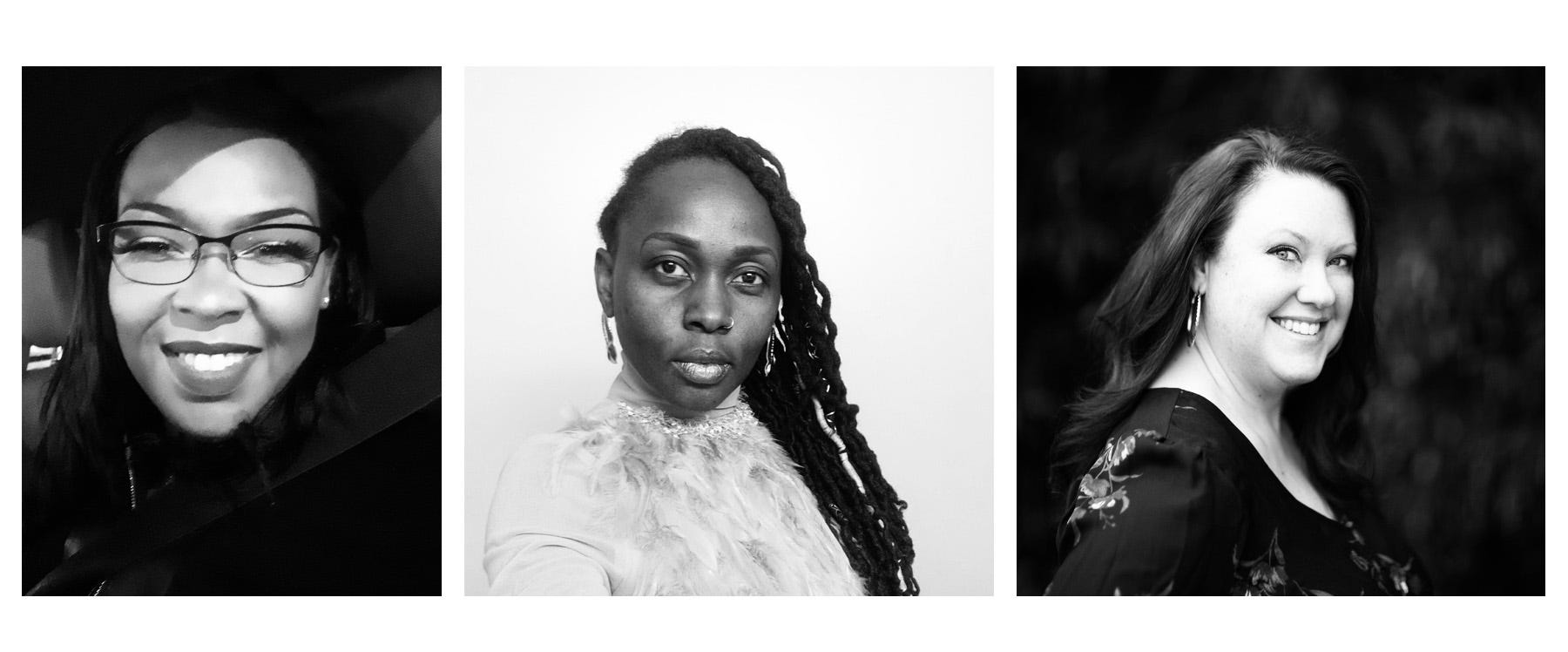
(From Left to Right) Angela Amina, Naada Boulandi and Kristie Dooley Taylor
Angela Amina, 37, started driving for Uber because she needed to supplement her income. Amina is a photographer and experiences, what she calls, “dry seasons,” a time when she makes little to no money. Months ago, she purchased a new car and needed more money to make payments. She also has two sons and a mother, who has health problems, to care for. However, she doesn’t get paid to care for her mother, and that they split the bills.
“Uber is my side hustle,” Amina said, who lives with her two sons, and her mother in Prince George’s County, Maryland, one of the wealthiest African American counties in the U.S. “I usually put in about 25 hours a week.”
Naada Boulandi, a resident of Montgomery County, Maryland, one of the wealthiest counties in the U.S., first drove for Lyft in 2019. After leaving Lyft for a more stable job, she came back to drive for the company in January 2020.
“I recently got my real estate license and wanted the flexibility to focus on building that career along with my home-based business, American Communications Network,” said Boulandi.
Kristie Taylor, 46 — a northern Virginia resident who is a teacher at an Ashburn, Virginia elementary school — is a single mother with three daughters. The twins are 18 years old and are in college. Her youngest is a junior in high school. Both college students are now at home. Colleges across the country have suspended in-person classroom learning and forced all students to attend classes online.She drove for Uber to earn extra income to support her three children. Taylor needed the money to supplement some income.
“ I…needed to supplement [my income] to support my family,” said Taylor, who also babysits, owns a photography business, and teaches summer school. “I have almost 5500 rides and a 4.95 rating. I can’t pay rent, feed my kids, and pay for college without Uber. It pays my gas, insurance, and extras.”
Boulandi, Amina, and Taylor have two things in common: They are women. They are women who need to drive to support themselves and their families in the midst of a deadly pandemic.
Working for Uber and Lyft during the pandemic has disappointed them. Before they could predict their week-to-week earnings, but now they can’t due to the shutdown. Their financial situations made them unable to be participants in helping to flatten the curve. Instead, their kind of face-to-face workplaces places them in positions where they could catch the virus — and spread it to other family members.
Driving During The Pandemic
I first talked to the women in mid-March. During that time the Governor of Virginia Ralph Northam, Mayor of Washington, D.C. Muriel Bowser, and Governor of Maryland Larry Hogan, shut down key hotspots for Uber and Lyft drivers: bars, restaurants, gyms, movie theaters. They also closed public schools and ordered college students to go home due to the spread of the novel COVID-19. Government workers, as well as other employees, have been told to work from home. Hogan restricted access to Baltimore/Washington International Thurgood Marshall Airport, saying that only ticketed passengers, airport staff, and workers or people assisting relatives or family members with disabilities can come to the airport. Days later governments shut down non-essential businesses. As the virus continued to spread and people died, Bowser, Hogan, and Northam were strongly encouraging residents to socially distance themselves.
Shutting down non-essential businesses and telework had reduced people’s reasons from going outside and by default affected these women’s, and other Uber and Lyft drivers, earnings, which caused them to worry about their future.
When the University of Maryland, as well as regional universities and colleges, suspended in-person classes, ordered college students to go home for the remainder of the semester, and directed faculty to teach online classes, Amina’s college student clientele decreased, resulting in lower earnings. Amina said she made $600 to $620 a week, but it decreased to $413. Amina called College Park, Maryland, the location of the university, and its surrounding neighborhood ghost towns.
If her earnings continued to drop, she was unsure of what she would earn.

Screenshots: Amina’s earnings in Feb — March. You can see how the extreme drop in earnings.
However, she began to prepare for the worse. Amina said she had saved enough money to make it through the rest of March and April, and she paid her two credit card bills for May. However, she said if COVID-19 continued to spread, keeping businesses closed and people at home into April, she didn’t know what she would do.
“I won’t have enough to pay anything other than my rent,” said Amina, who calls herself a Christ-follower. “I’m a little stressed, but I’m prayerful. I have two sons and they live off my energy. If I show them that I’m stressed, they will get stressed.”
Taylor, who drove mostly in the suburbs of Washington D.C., said her Uber clients ranged from 21 to 40 years old. Like Amina, she picked up college students as clients. She picked them up from bars. Before political leaders closed the bars, even while the virus was still spreading, Dooley said she was still picking up students from bars.
It was “like nothing had changed in their lives,” said Taylor.
But then those crowds slowly dried up, so she made less money. Also, clients were not tipping as much anymore. She also worked the airports, doing drop-offs and pickups. But, like at the bars, her clientele decreased. Due to the virus spreading by close contact, flight attendance dramatically dropped.
“I would do drop-offs and pickups [at the airports], but my drop-offs are zero,” said Taylor. “With telework, people’s spouses or family members are driving and dropping them off. They don’t need rides.”
This caused Taylor to rethink her driving schedule. She usually worked from 11 p.m. to 3 a.m. on Friday and Saturdays, but was, at the time, thinking she needed to make a change. She hoped to add 4 a.m. to 8 a.m. to her schedule so that she could add more clientele. Virginia, unlike Maryland, has not restricted its airport to ride-share drivers. Drivers are still allowed to drop off and pick up passengers.
Also, with a decreased supplemental income, she’s now spending more money. Her home expenses have increased now that her daughters are back at home.
“My food cost and utility costs are double,” said Taylor. “I still have my teacher’s salary, but on that alone, I can’t pay rent and the fees for my kids’ college without Uber.”
Before the COVID-19 hit the region, Boulandi primarily drove from 7 a.m. to 12 p.m., making $500 per week. Lyft was Boulandi’s primary source of income. Her earnings, like the other women, had significantly decreased, saying that she had to start driving on weekends.
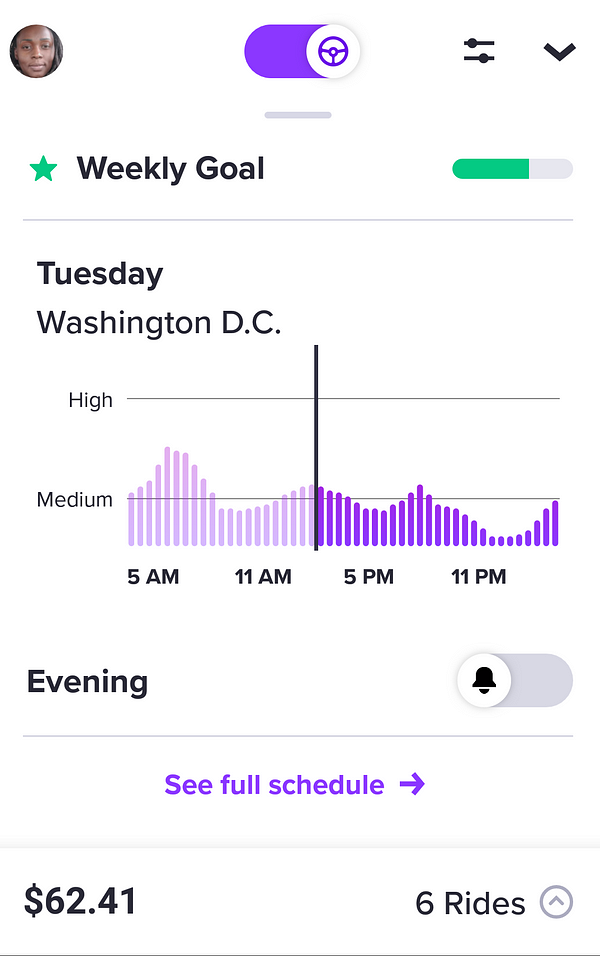
Thinking she could earn more money, she reasoned that she would awake at 5 a.m. But that decision, in the long run, did not work out. Her earnings did not increase.
“I was out for 4 hours — and only made about $40. That’s not normal for a Sunday evening,” said Boulandi.
The women often expressed their feelings about their work in a private group for D.C. metro area Uber and Lyft drivers. Jane, an admin, allowed me to enter the group to talk to people about driving for the companies.
“… Essentially, we use this group to let off some steam, to establish camaraderie in an industry where we do not have co-workers, and lastly to discuss issues that we as drivers experience,” she wrote.
On March 17th, responding to a status that asked how everyone was doing with their earnings, Boulandi replied: “Made $62 from 6 trips by 9:30 a.m. Doesn’t look too good.”
“Naada Boulandi not bad I rather take that $62 than…$0,” replied the person who wrote the status.
“During rush hour, the forecast normally has high demand between 5 and 9 a.m.,” said Boulandi. “Now it’s below medium demand and you can tell. I particularly don’t like driving in D.C. because it’s a lot of short trips and drivers don’t get paid as much for the same length trips in Maryland.”
Boulandi shared a screenshot of her Lyft earnings with me. Here is a screenshot.
Boulandi, who also doesn’t have health insurance, felt like things might get worse for her, and she didn’t like that feeling. But, she pushed through it.
“I’ll keep going until I can’t,” said Boulandi, adding that she eats healthy foods and goes to the gym to ensure that she maintains her health.
But it’s not only about the decreased weekly earnings, which put the women in a financial vise grip. The women also used their own money to purchase sanitation products. Amina said Uber sent her a notification, and perhaps other drivers, saying that it would supply drivers with cleaning products. But added, that it prioritizes drivers that work within the cities with the most needs. Amina said Uber never sent any cleaning products.
Uber sent Angela and notification telling her that it would supply her with cleaning supplies.
Taylor and Amina did not wait to see if Uber was going to supply hand sanitizer. They had to do something to keep themselves safe as well as their clients. If they contracted the virus it would have sidelined them.
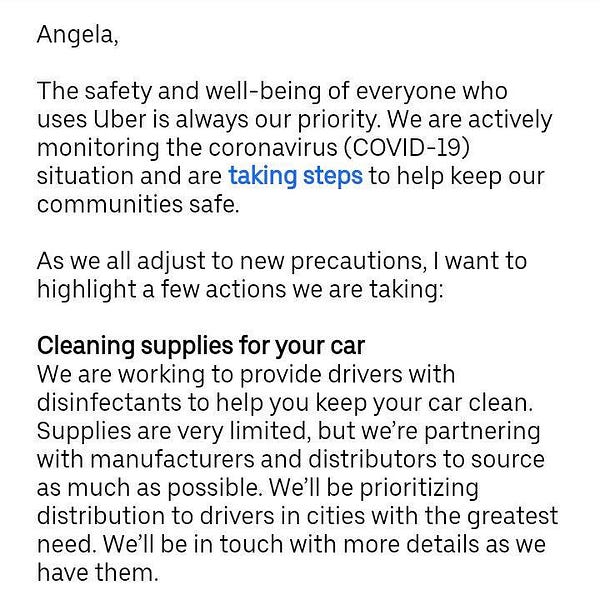
Taylor said she kept antibacterial spray in the front seat and said she sprayed her hands every day after a client(s) left her car. She told me that she practiced social distancing while driving by not letting clients sit in the front seat, and held a no handshaking rule. She also lessened her trips to the airports, because she was afraid of putting herself at risk.
“I didn’t mind dropping people off there,” she said.
Boulandi sanitized her car daily and washed her hands.
When I interviewed the three women, the number of confirmed cases and deaths was still relatively low, compared to places like New York. During that time, in Virginia, where Taylor lives, there were a confirmed 114 coronavirus cases and two deaths. Most of those cases were in the northern Virginia area, not far from Washington, D.C, which had 20 confirmed cases and 1 death at the time. Maryland had 149 confirmed coronavirus cases, most of those cases, 51, were in Montgomery County, where Boulandi lives, and Prince Georges County, 31, where Amina lives. Prince Georges County had one recorded death, a 60-year-old African American man.
However, the women are not concerned about their health. Amina said that she had just turned 37 years old and that she was in good health.
Taylor said something similar. She cited her age and said that her healthy immune system was a reason not to worry about catching the virus.
“I am not afraid of the virus,” Boulandi said. “I believe the media is overplaying things.” Her only fear, at least in terms of the virus, was that she couldn’t get tested because she was asymptomatic.
Amina said her two sons were afraid that she could catch the virus. Of the two, she said, her older son was very afraid.
“I showed him that the first three people that tested positive in Maryland are all better now,” she wrote to me. “He was relieved.”
Amina said her faith in Jesus had prepared her for hard times. “We as believers have been waiting for this to happen, almost our whole lives,” she said. “ Not [the coronavirus exactly], but the world as Revelations describes. I pray all the time, consciously and subconsciously. I just know at all times, Elohim, The Most High is in control. Come what may… To live is Christ and to die is gain.”
Taylor said her two daughters understand that if she doesn’t drive, that means budget cuts in the home.
“I don’t think they worry about me catching it, more of how it will affect us financially,” explained Taylor, who doesn’t consider herself religious, but does believe in a version of Karma.
“I feel like I am due for something positive in my life,” said Taylor.
The women also thought Lyft and Uber weren’t doing enough to help drivers through their financial uncertainty. Uber and Lyft have decided to pay drivers who have contracted the disease. But what about the drivers who aren’t sick, and who are losing income because the virus is affecting local economies?
“The only other thing is that I wish Uber had another way to help drivers impacted [by this pandemic],” Amina said. “….Uber was only willing to help drivers diagnosed with COVID-19, but we weren’t affected. I especially feel bad for full-time drivers.”
Policy
On March 23rd, before Congress passed the CARES Act, Dara Khosrowshahi, Uber’s CEO, asked the president and members of Congress to help bring economic relief to their contractors.
“My goal in writing to you is not to ask for a bailout for Uber, but rather for support for the independent workers on our platform and, once we move past the immediate crisis, the opportunity to legally provide them with a real safety net going forward,” wrote Khosrowshahi, according to CNBC.
The CARES Act, also known as the $2.2 trillion stimulus bill, will potentially benefit American workers, including gig workers. The bill will pay a check to employees’ making up 75,000, and family up 150,000 1,200 dollars and an additional $500 per dependent. Those who file jointly will get a $2400 check. Rideshare drivers (Uber and Lyft) will be allowed to apply for unemployment as well as receive an additional $600.
“Currently in Maryland, individuals who are self-employed, independent contractors, file a 1099, or are part of the “gig” economy are not typically eligible for unemployment insurance benefits,” said Fallon Pearre, director of communications and media relations at The Maryland Department of Labor. “However, the Federal Cares Act, which is being voted on in Congress speaks to this issue and will likely expand benefits to these individuals.”
I reached out to D.C. and Virginia’s Department of Labor to ask about the plan to pay gig workers. They have not responded to my questions. The stimulus has made funds available to contract workers, which includes gig workers and freelancers. However, according to the D.C. Policy Center, D.C. politicians would have to alter the rule so that those that apply for unemployment can receive the extra $600.
Before passing the bill, when Congress first floated the idea of paying a one-time check of $1,200 to Americans, I asked the women what they thought about possibly receiving the money to supplement income. Amina said it would be helpful for people to get money to pay their bills.
But for one Uber driver, and perhaps others, this may not be enough money. Taylor said her teacher’s salary brings in about $69,000 per year. However, Northern Virginia is home to some of the richest counties in the nation. The household median income is as high as $140,000. The Mid-Atlantic area is an expensive area to live in, and many residents are struggling to make ends meet, even if they do make a steady income like Taylor. The cost of living in some neighborhoods is more expensive than others, and in connection to this, the average life expectancy rate differs among neighborhoods.
Because Taylor has three children over 16 years old. According to recent reports, she will not receive $500 for each of them. Taylor said her rent is $1,800 per month, not to mention that she has to pay for utilities and food.
“… so while $1,200 would help, it’s only a drop in the bucket as to covering a month’s expenses,” she said. “ I would need $3000 to be comfortable with rent bills and food.”
According to WAMU, D.C. will split stimulus funds between Puerto Rico, Guam, American Samoa, the Northern Mariana Island, and The US Virgin Islands. This would amount to about $500 million, which may not be enough to help the city combat its economic downturn. However, Maryland and Virginia are projected to receive a combined $2.5 billion in federal aid during this time.
“ I can’t even think of a way in a funding bill that the District is treated as one of the territories, so it’s quite shocking. It is more the rule that we are treated as a state in about all senses when it comes to housing funds or education funds or any number of federal funding formulas,” said Mayor Bowser.
Since mid-March, the region’s confirmed coronavirus cases and deaths have soared. Maryland, Virginia, and D.C. are over 5,535 confirmed COVID-19 cases, and a combined 104 deaths. Of those confirmed COVID-19 cases, Maryland and Virginia have 4771 of the total. Maryland’ s data also shows that 20, 932 people have had negative results when tested, and 159 people were released from isolation. (This only includes Maryland and D.C. Virginia has not made those numbers public). However, by the time this story publishes, sadly these numbers might have increased.
Also, Hogan, governor of Maryland, has demanded that residents shelter-in-place, further decreasing outside activity in the region. I reached out to the women one last time to see if anything had changed with them. Hogan, Bowser, and Northam were doing daily updates on the coronavirus and implementing new rules for residents to help mitigate the spread. I wanted to see if they were making different decisions in lite of the political leaders’ decisions and the spread of the virus.
Amina had mentioned that if her earnings continued to drop into April, she didn’t know if she would have enough money to pay her bills. By late March, she realized that life with Uber wasn’t economically sustainable, and that was putting herself and family in danger. She decided to leave. She tried UberEats, a food delivering service, but said, in terms of supplementing her income, that it was a “hit or miss.”
“I decided that my health was more important than catching the coronavirus, and passing it on to my mom or kids,” Amina explained. “I am going to focus on doing custom T-shirts and apparel. Last year, around this time, I purchased a lot of equipment to do it and never really got it off the ground. Now is the time.”
Taylor and Boulandi also decided to leave rideshare companies and began working for Instacart. Instacart announced that they were hiring more than 100,000 workers. Due to local governments enacting social distance rules and shelter in place, the demand for food delivery services has increased.
Driving for Uber was, Taylor said, “incredibly slow to the point where it wasn’t worth driving around for minimum wage, and below….”
Today was my last day [at Lyft], said Boulandi. “I don’t see the point…”
Boulandi also said her focus is trying to figure out how to make more money.
For these women, the goal has never been to work in uncertainty. Their search, like other Americans, is for a life where they don’t have to worry about how they are going to sustain their lives. As for now, they work, looking for a better opportunity to make more money — and that is all they can do.

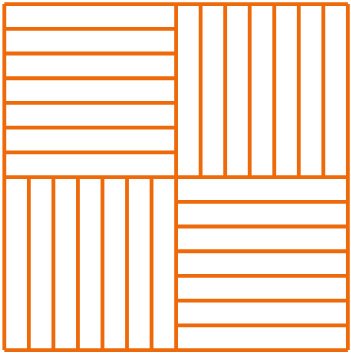
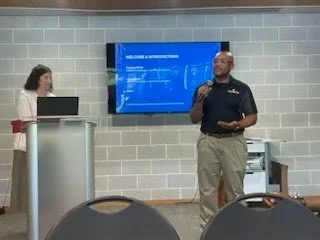

Baltimore, Maryland -- While at the Maryland Lynching Memorial Project’s 8th annual conference, two of the Maryland Lynching Truth and Reconciliation Commission’s commissioners showed attendees, in the form of a slide show, a list of recommendations for a statewide policy to help remedy and repair communities injured by lynchings and racial discrimination.